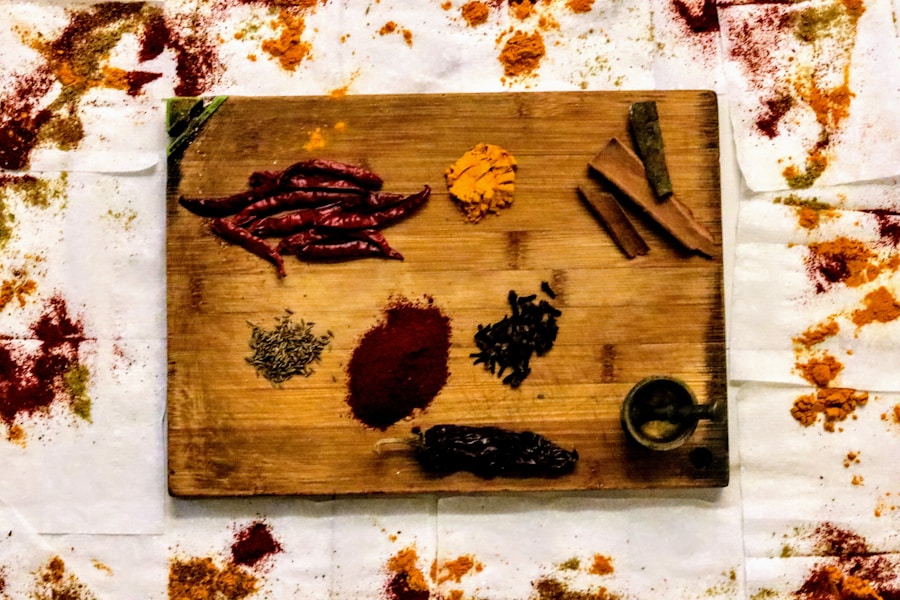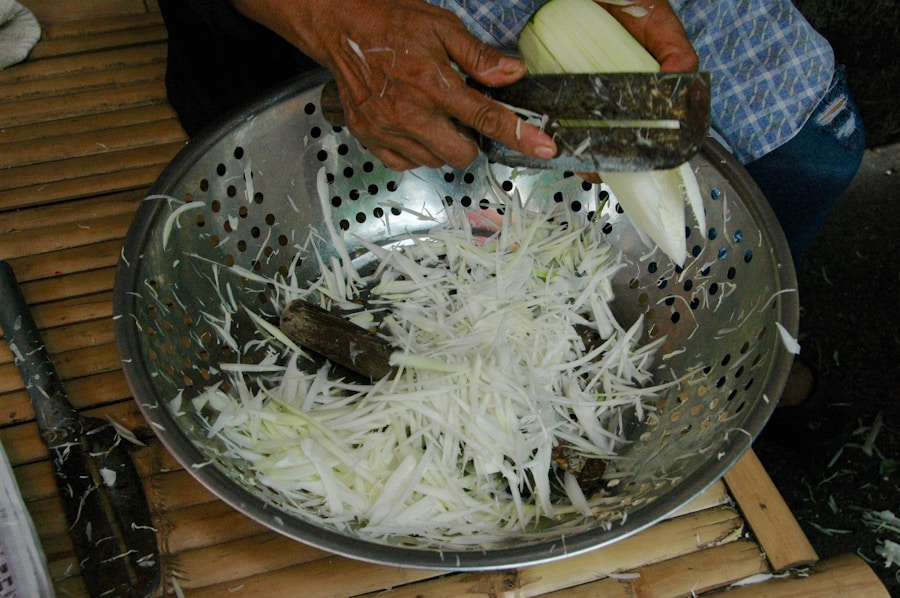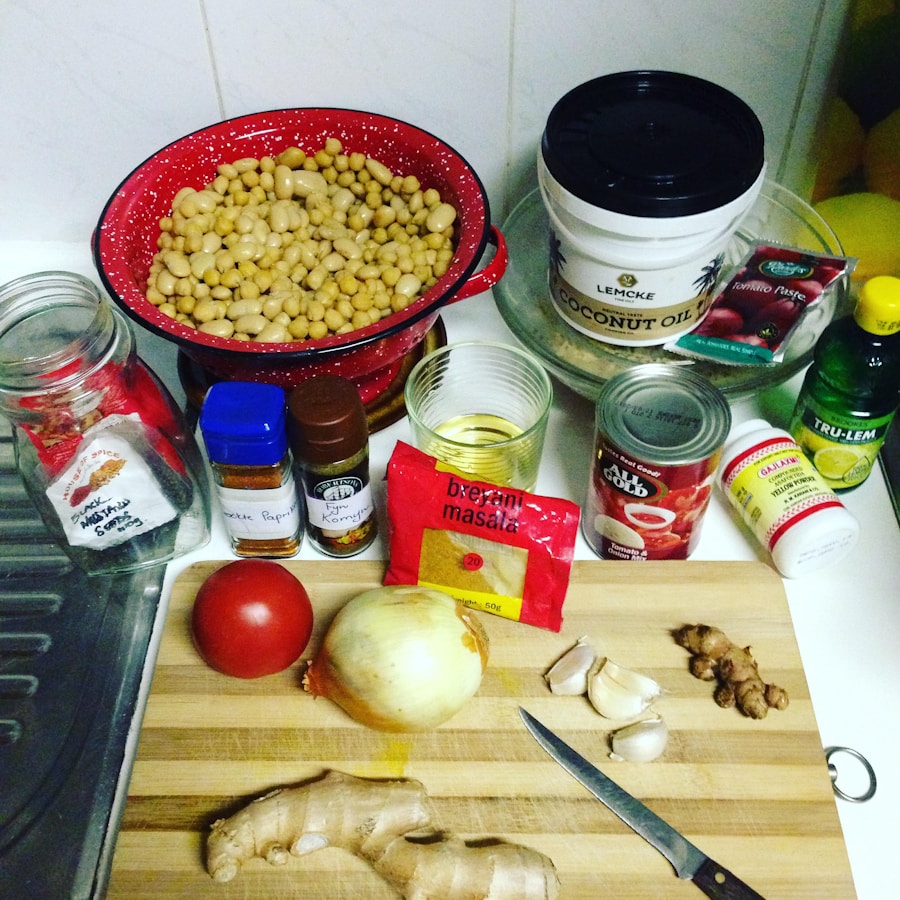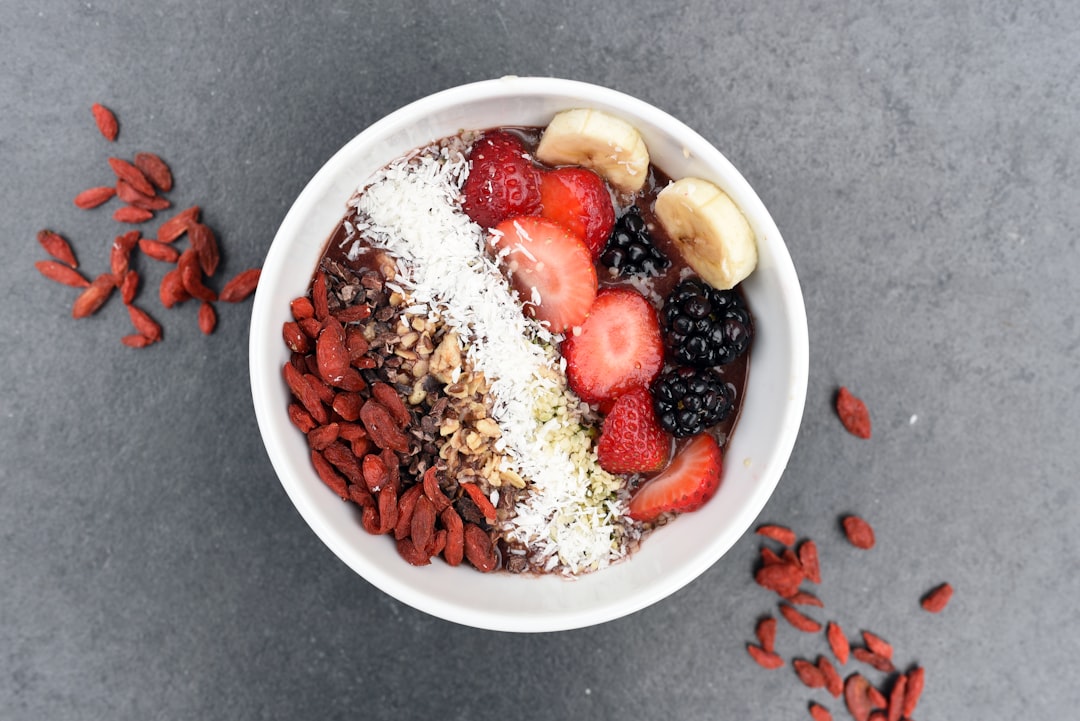Flavor profiles are the backbone of culinary arts, serving as the foundation upon which dishes are built. Each ingredient possesses a unique flavor that can be categorized into various profiles, such as sweet, salty, sour, bitter, and umami. Understanding these profiles is essential for any chef or home cook aiming to create harmonious and balanced dishes.
For instance, tomatoes exhibit a natural sweetness that can be enhanced through roasting, while their acidity can cut through the richness of fatty ingredients like cheese or olive oil. By recognizing how these flavors interact, cooks can manipulate them to achieve desired outcomes in their dishes. Moreover, flavor profiles are not static; they can evolve through cooking techniques and ingredient combinations.
The Maillard reaction, for example, occurs when proteins and sugars in food are exposed to heat, resulting in complex flavors and aromas that are often described as savory or nutty. This transformation is evident in grilled meats and roasted vegetables, where the initial raw ingredients undergo a metamorphosis that enhances their inherent flavors. Understanding these transformations allows cooks to experiment with different cooking methods and ingredient pairings, ultimately leading to innovative and exciting culinary creations.
Key Takeaways
- Understanding flavor profiles is essential for creating well-balanced dishes
- Knife skills and basic techniques are the foundation of good cooking
- The importance of seasoning cannot be overstated in elevating the flavor of a dish
- Mastering cooking methods and heat control is crucial for achieving the desired results
- Balancing sweet, salty, sour, and bitter flavors is key to creating harmonious dishes
Knife Skills and Basic Techniques
Knife skills are fundamental to the culinary arts, serving as the gateway to efficient and precise food preparation. Mastering basic techniques such as chopping, dicing, and julienning not only enhances a cook’s efficiency but also ensures uniformity in cooking times and presentation. For instance, when preparing a mirepoix—a mixture of diced onions, carrots, and celery—uniform cuts allow for even cooking and flavor distribution in soups and stews.
A well-honed knife is an essential tool in this process; it should be sharp enough to glide through ingredients with minimal effort, reducing the risk of accidents that can occur with dull blades. In addition to basic cutting techniques, understanding the anatomy of a knife is crucial for effective use. Different knives serve specific purposes; for example, a chef’s knife is versatile for most tasks, while a paring knife excels at intricate work like peeling fruits or deveining shrimp.
Learning how to hold a knife properly—using a pinch grip for control and stability—can significantly improve precision and safety. Furthermore, practicing techniques such as the claw grip helps protect fingers while cutting, allowing cooks to focus on their tasks without fear of injury. As one becomes more adept at knife skills, the kitchen transforms into a space of creativity and efficiency.
The Importance of Seasoning

Seasoning is often regarded as the soul of cooking; it elevates dishes from mundane to extraordinary by enhancing natural flavors and creating depth. Salt is perhaps the most fundamental seasoning, acting as a flavor enhancer that can bring out the best in ingredients. The judicious use of salt can transform a bland dish into a flavorful masterpiece by highlighting the inherent qualities of each component.
For example, a sprinkle of salt on fresh tomatoes not only enhances their sweetness but also balances their acidity, creating a more complex flavor profile. Beyond salt, other seasonings such as herbs, spices, and acids play vital roles in flavor development. Fresh herbs like basil or cilantro can add brightness and freshness to dishes, while spices such as cumin or paprika introduce warmth and depth.
Acids like lemon juice or vinegar can cut through richness and provide a refreshing contrast to fatty ingredients. Understanding how to layer these seasonings throughout the cooking process is essential; adding salt at different stages can yield varying results. For instance, seasoning meat before cooking allows the flavors to penetrate deeply, while finishing with a sprinkle of flaky sea salt can provide a delightful textural contrast.
Cooking Methods and Heat Control
| Cooking Method | Heat Control |
|---|---|
| Boiling | High heat until boiling, then reduce to simmer |
| Grilling | Direct heat for searing, then indirect heat for cooking through |
| Baking | Even heat distribution in oven, adjust temperature as needed |
| Sautéing | Medium-high heat for browning, then lower heat to cook through |
| Steaming | Gentle heat to produce steam, adjust as needed |
The choice of cooking method significantly impacts the final outcome of a dish, influencing both flavor and texture. Techniques such as roasting, grilling, steaming, and sautéing each impart unique characteristics to ingredients. Roasting vegetables at high temperatures caramelizes their natural sugars, resulting in a sweet and savory flavor profile that is hard to replicate through other methods.
Conversely, steaming preserves the vibrant colors and nutrients of vegetables while maintaining their crisp texture. Understanding these methods allows cooks to select the appropriate technique based on the desired outcome. Heat control is equally important in achieving optimal results.
Different cooking methods require varying levels of heat; for instance, searing meat demands high heat to create a flavorful crust while keeping the interior tender and juicy. Conversely, braising requires low heat over an extended period to break down tough cuts of meat into tender morsels. Mastering heat control involves not only adjusting burner settings but also understanding how heat distributes throughout different cookware materials.
For example, cast iron retains heat exceptionally well, making it ideal for searing, while stainless steel provides quick responsiveness for delicate sauces. By mastering both cooking methods and heat control, cooks can unlock a world of culinary possibilities.
Balancing Sweet, Salty, Sour, and Bitter
The art of balancing flavors is crucial in creating well-rounded dishes that engage the palate. Each flavor—sweet, salty, sour, and bitter—plays a distinct role in culinary composition. Sweetness can soften harsh flavors or enhance richness; for example, adding honey to a spicy chili can create a delightful contrast that rounds out the dish.
Saltiness amplifies flavors and can help balance sweetness; think of how salted caramel elevates desserts by providing depth. Sourness introduces brightness and acidity that can cut through richness or heaviness in dishes. A squeeze of lemon juice over grilled fish not only enhances its flavor but also adds a refreshing element that brightens the overall experience.
Bitterness can be more challenging to incorporate but can add complexity when used judiciously; ingredients like arugula or dark chocolate can provide an intriguing counterpoint to sweeter elements in a dish. The key lies in understanding how these flavors interact with one another; achieving balance often requires tasting throughout the cooking process and making adjustments as needed.
Utilizing Fresh Ingredients

Fresh Produce: Unparalleled Taste and Nutrition
Fresh produce not only boasts superior taste but also retains more nutrients compared to its processed counterparts. For instance, ripe tomatoes picked at peak season possess an unparalleled sweetness and acidity that canned varieties simply cannot replicate.
The Power of Fresh Herbs and Seasonal Ingredients
Similarly, fresh herbs offer aromatic qualities that dried herbs lack; basil’s fragrant oils are most potent when used fresh rather than dried. Incorporating seasonal ingredients into cooking not only enhances flavor but also supports local agriculture and sustainability efforts. Farmers’ markets provide an excellent opportunity to source fresh produce while fostering community connections.
Seasonal Ingredients: Affordability, Abundance, and Creativity
When ingredients are in season, they are often more affordable and abundant; this encourages creativity in the kitchen as cooks experiment with new recipes based on what is available. Additionally, understanding how to store fresh ingredients properly extends their shelf life and preserves their quality—keeping herbs in water or wrapping them in damp paper towels can maintain their freshness longer.
Pairing Wine and Food
Wine pairing is an art form that enhances the dining experience by complementing or contrasting flavors in food. The principles of pairing revolve around balancing acidity, sweetness, tannins, and body between wine and food. For example, a high-acid white wine like Sauvignon Blanc pairs beautifully with dishes featuring citrus or vinegar-based dressings because it mirrors the acidity while cutting through richness.
On the other hand, a full-bodied red wine such as Cabernet Sauvignon complements hearty dishes like grilled steak due to its robust tannins that stand up to rich flavors. Understanding regional pairings can also guide wine selection; classic combinations often arise from traditional culinary practices within specific regions. Italian cuisine frequently pairs with Chianti due to its acidity complementing tomato-based sauces, while French cuisine often features Burgundy wines alongside duck or mushroom dishes for similar reasons.
Experimentation is encouraged; sometimes unexpected pairings yield delightful surprises that elevate both the food and wine experience.
Plating and Presentation
The visual appeal of a dish plays a significant role in its overall enjoyment; plating is an essential skill that transforms food into an art form. Thoughtful presentation engages diners’ senses even before they take their first bite. Techniques such as using contrasting colors or varying heights can create visual interest on the plate; for instance, placing vibrant green herbs atop a creamy white sauce adds both color and texture.
Additionally, understanding plate composition is crucial for effective presentation. The rule of thirds suggests dividing the plate into sections for balanced arrangement; placing the main protein off-center while surrounding it with colorful vegetables creates an inviting visual dynamic. Garnishes should enhance rather than overwhelm; a sprinkle of microgreens or edible flowers can elevate a dish without detracting from its primary components.
Ultimately, plating is about storytelling—each element should contribute to the narrative of the dish while inviting diners to savor both its beauty and flavor.



